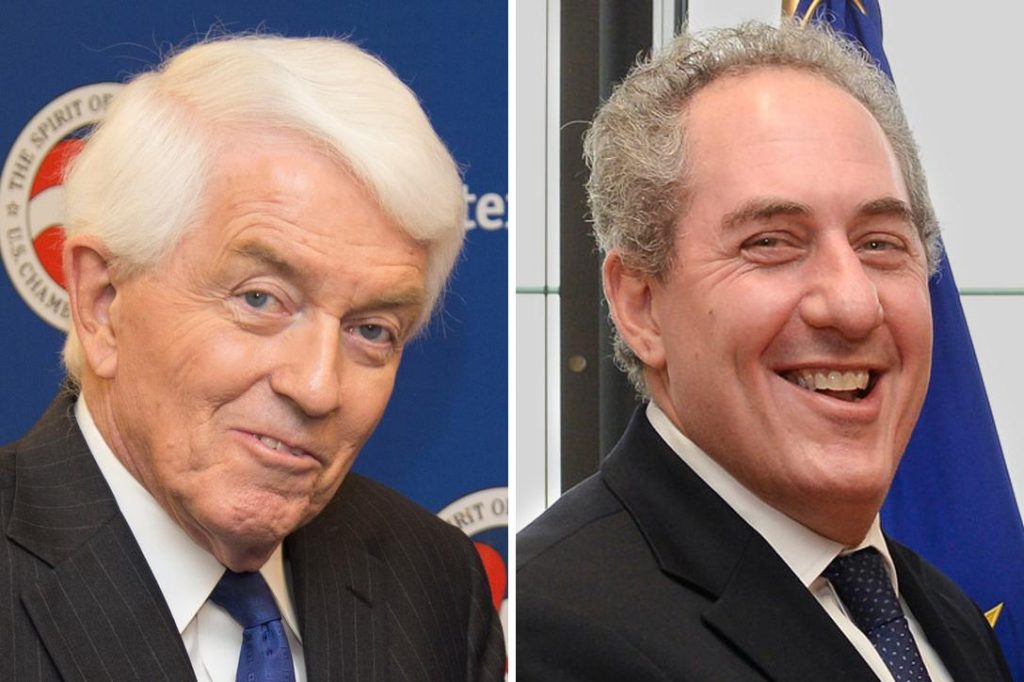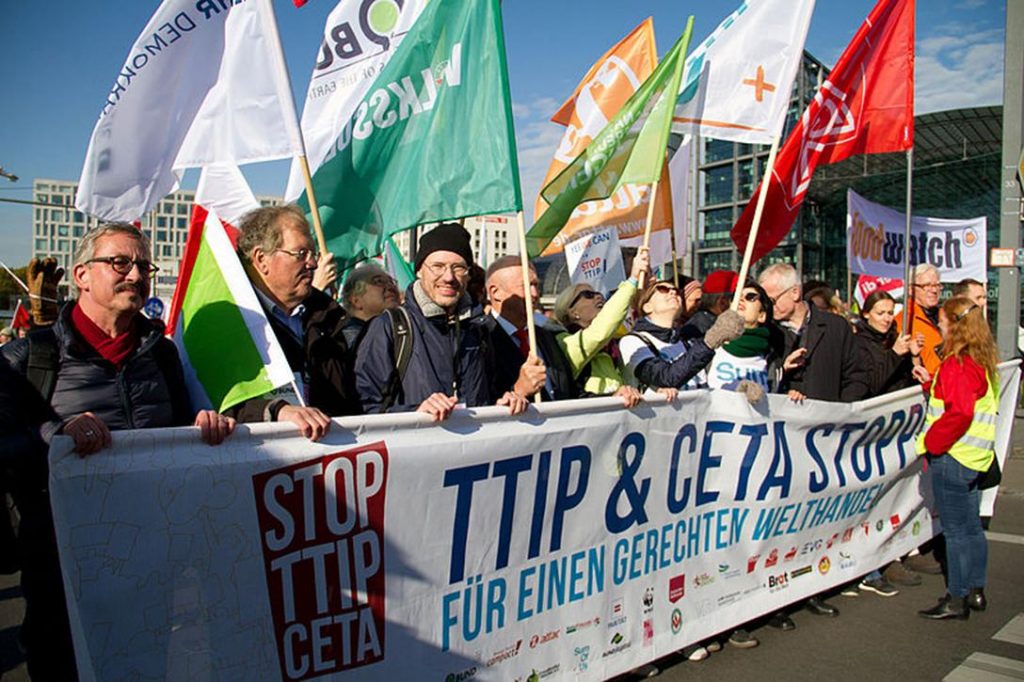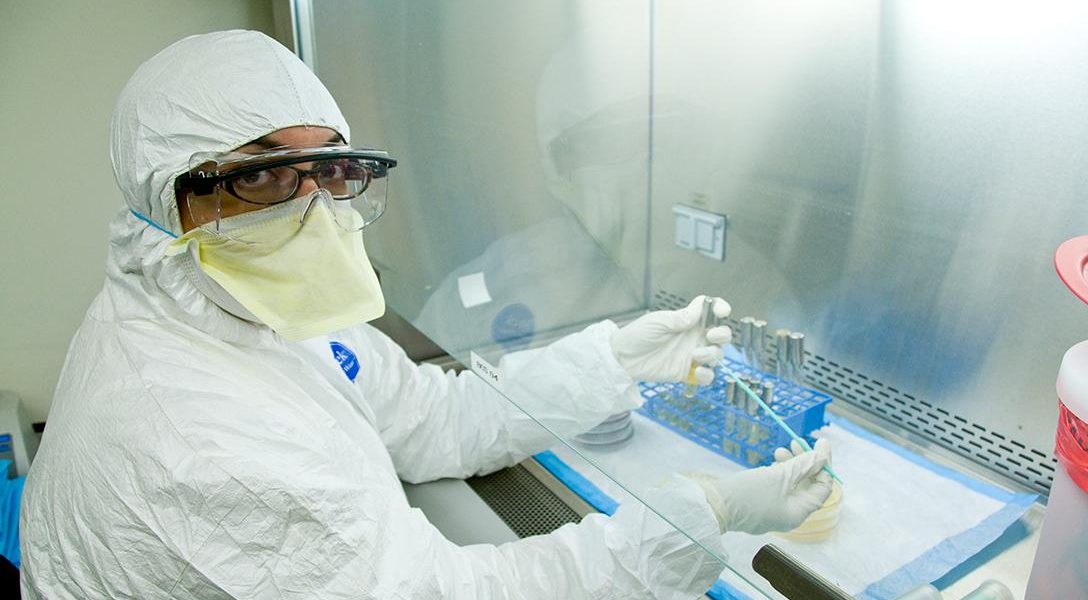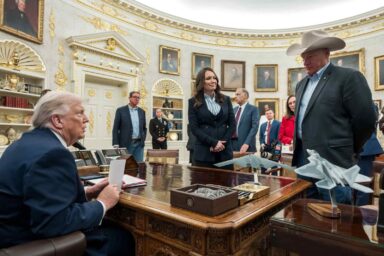President Donald Trump reportedly might reconsider his opposition to TTIP. We investigated how a trade deal with Europe could harm the health of Americans.
It reportedly took German Chancellor Angela Merkel eleven times to disabuse President Donald Trump of the notion that he could do a trade deal with Germany. She repeatedly told him that a bilateral trade agreement between the US and Germany was not possible since Germany was a member of the European Union (EU). Finally, Trump understood and seemed interested in restarting negotiations for the Transatlantic Trade and Investment Partnership (TTIP), a proposed pact between the US and all 28 EU countries, which he had opposed as a candidate.
We thought this story on TTIP’s potential threats to public health and safety and the environment on both sides of the Atlantic is worth a second look. Under Trump, the dangers of a revived TTIP may be even greater, in light of this administration’s efforts to weaken consumer-protection regulations and to defund federal regulatory agencies across the board.
In 1960, one courageous Food and Drug Administration official refused to approve a drug that had already been used widely abroad. Frances Kelsey insisted she needed more information before she could be satisfied it was safe. The drug maker accused her of being a petty bureaucrat. But Kelsey was right to be cautious. That drug was thalidomide and pregnant women who took the sedative gave birth to thousands of children with terrible birth defects in Europe, the UK, Canada, and the Middle East. Because of Kelsey’s vigilance, however, America was spared that tragedy.
If the US and EU agree on a new trade deal in the works — the Transatlantic Trade and Investment Partnership (TTIP) — it would be very difficult for one watchdog on either side of the Atlantic to have the same life-saving impact.
Instead, business interests would wield far greater influence on the quality of our food, drugs, cosmetics, and pesticides, and the presence of toxic chemicals in our environment. It would be very difficult for any regulator to resist that corporate influence, or to buck the collective judgment of more compliant regulators in other countries.
How corporations will wield that influence is suggested in the fine print of trade proposals advanced by the US Trade Representative (USTR) and strongly endorsed by the international business community.
The proposed trade deal would affect 820 million consumers, and thousands of the corporations doing business in the 28 EU countries and the United States.
It should come as no surprise that the agreement has been largely shaped by business interests. As The Washington Post reported in 2014, 85 percent of the individuals serving as trade advisors to the USTR represented either corporations or business trade groups.
Americans may have grown used to trade deals dominated by multinational corporations, such as NAFTA (the North American Free Trade Agreement, which has been in effect since 1994). This deal, however, is focused not on trade barriers like tariffs, but on regulations — rules that health, safety and environmental advocates call “public protections” and that businesses term “trade irritants.”
My experience on the trade deal came through my work as a public-interest lobbyist for the Union of Concerned Scientists (UCS), which I left one month ago. UCS did not take a position on trade per se, but actively opposed efforts in Congress to make it much more difficult for government agencies to use science to inform their regulations, without fear of political or corporate influence.

The US Chamber of Commerce has made regulatory “coherence” a huge part of its agenda. The Chamber and the USTR both insist that more collaborative rule-making between the US and EU could save companies the costs of complying with two sets of rules, and could make the entire process work more effectively, without harming public health and safety and the environment.
Completing the TTIP trade agreement is a major goal of the Obama Administration and the EU. Negotiations, underway for the past three years, are now ramping up, in an attempt to seal the deal before Obama leaves office.
The USTR does not publicly disclose the proposals it has made to the EU, and negotiated trade texts are kept secret. But Greenpeace Netherlands recently released a leaked copy of some of these proposals, including a chapter on “regulatory cooperation.”
The term sounds benign, but it could have dramatic consequences. If the EU accepts the US proposals, it would mean that regulators will no longer consider the public interest their first priority. Instead, they will have to weigh how much any protective rule will cost business, and whether those costs can be justified by the benefits the rule offers to the public at large.
Regulators will also be asked to consider other alternatives to a proposed rule, including the option of doing nothing, and to explain why such alternatives are not acceptable. And they will, for the first time, have to evaluate the potential impact of proposed regulations on trade. This new requirement could greatly complicate the work of developing and implementing new regulations, including safety rules, for both the EU and the US.
Robert Weissman, president of the public-interest group Public Citizen, warned that the leaked documents were evidence that multinationals were out to undermine the public protections that Europeans are accustomed to.
The EU quickly rebutted these concerns. Cecilia Malmström, the European Commissioner for Trade, insisted that the leaked texts are merely proposals that do not represent the final agreement between the trading partners. She also repeated a pledge that the EU would never surrender its high standards of public health and safety in order to do a trade deal.
Business groups and a number of European officials also downplayed any potential harm an agreement could cause, while touting its potential to increase jobs and prosperity.
But consumer, public health and environmental advocates on both sides of the Atlantic believe that TTIP will lead to lowest-common-denominator regulations — with possibly dire consequences.
For the EU, this could mean far less protection from toxic chemicals, pesticides, cosmetics and food that Europe currently does not permit but the US allows, such as chicken rinsed in chlorine. The EU banned chlorine baths in the 1990s, concerned about the procedure’s possible links to cancer.
For the US, anti-TTIP advocates worry that the trade deal will make it more difficult for regulators to keep potentially dangerous drugs and devices currently approved in Europe out of the US market, risking a repeat of the thalidomide crisis.
There is also concern that the TTIP will keep state governments in the US from imposing stricter regulations when federal agencies fail to act, whether in matters of food safety, labeling of toxic chemicals, or banning dangerous materials.

Both US and EU officials deny that standards will be relaxed. But the US experience with regulation seems to belie those assertions. Critics charge that the US regulatory process has helped ensure that crucial public protections often are delayed for years, and are weakened through political interference from the White House Office of Management and Budget, and through corporate lobbying.
Increasingly, rulemaking in the US is subject to cost-benefit analysis. When the focus is on making it cheaper for corporations to comply, safety concerns are downplayed. Consider this recent example. In 2009, a commuter plane crashed into a home in Buffalo, New York, killing 45 passengers, four crew members, and one person on the ground. The National Transportation Safety Board concluded that pilot error likely was linked to sleep deprivation.
The Federal Aviation Administration (FAA) proposed rules to ensure that pilots were sufficiently rested before they took the helm of an airplane. Business stakeholders lobbied the White House, seeking to weaken the regulation. They succeeded. When the FAA issued new rules to prevent pilot fatigue, cargo pilots were excluded. The reason? Cost-benefit analysis.
A crash of a passenger plane could result in dozens, if not hundreds of deaths, each one with a dollar cost. But the crash of a cargo plane likely would kill only the pilot. So the cost of complying with the rule for the cargo companies could be greater than the benefit of saving one pilot’s life.
Up until now, the EU largely makes rules based on the precautionary principle, or, in layman’s terms, “Better safe than sorry.” It is the precautionary principle, for example, that underlies the EU’s strict process for approving chemicals: chemical makers have to prove that a chemical is safe before it can be sold.
In the US, it’s the other way around. The Environmental Protection Agency has to prove that a chemical is dangerous before its use can be restricted. As a consequence, many toxic chemicals that are banned or restricted in Europe remain on the market in this country.
“If we try to export our current regulatory regime to Europe, it could undermine science-based public health, safety, and environmental protections across the Atlantic, and most likely at home too.” said Weissman of Public Citizen. He painted a grim picture of TTIP’s potential impact: “This trade deal could expand the current broken system in the US and create even more opportunities for corporate interests to spread misinformation, weaken critical public protections, and challenge important health and safety standards, even at the state level and local level.”
Regulatory lawyer James Goodwin, a senior policy analyst for the Center for Progressive Reform, was even blunter in assessing the leaked trade document. “To see such bad policy written down shocks the conscience,” he said.
Celia Wexler was a public interest lobbyist for twenty years, serving first as vice president for advocacy for the good-government group, Common Cause, and then as Senior Washington Representative for the Union of Concerned Scientists. She now has returned to her first profession, journalism.
Related front page panorama photo credit: Adapted by WhoWhatWhy from seesaw (Donnie Ray Jones / Flickr – CC BY 2.0), barrel (U.S. Marine Corps / Wikimedia), toxic symbol (Silsor / Wikimedia) and globe (ClkerFreeVectorImages / Pixabay)



